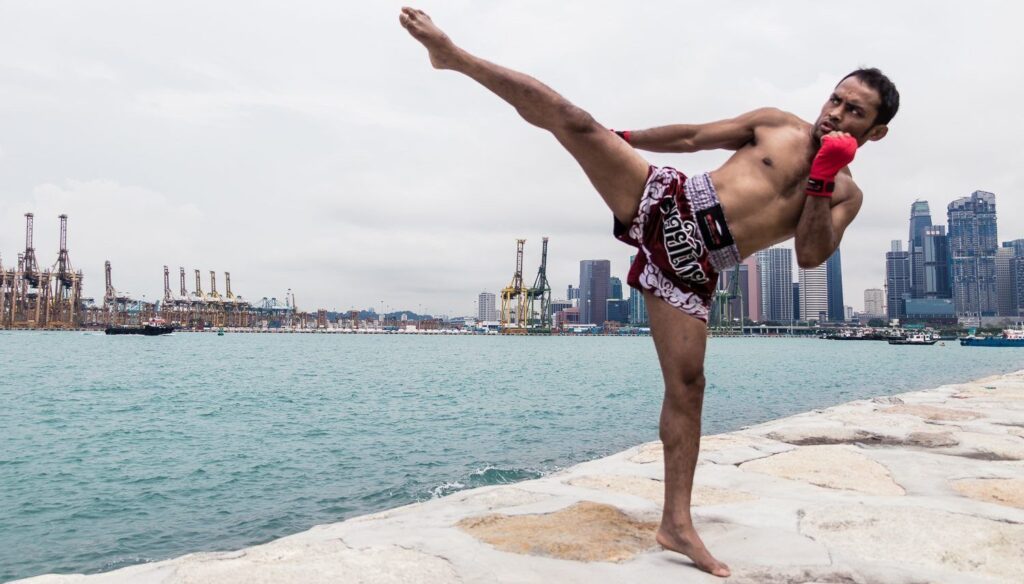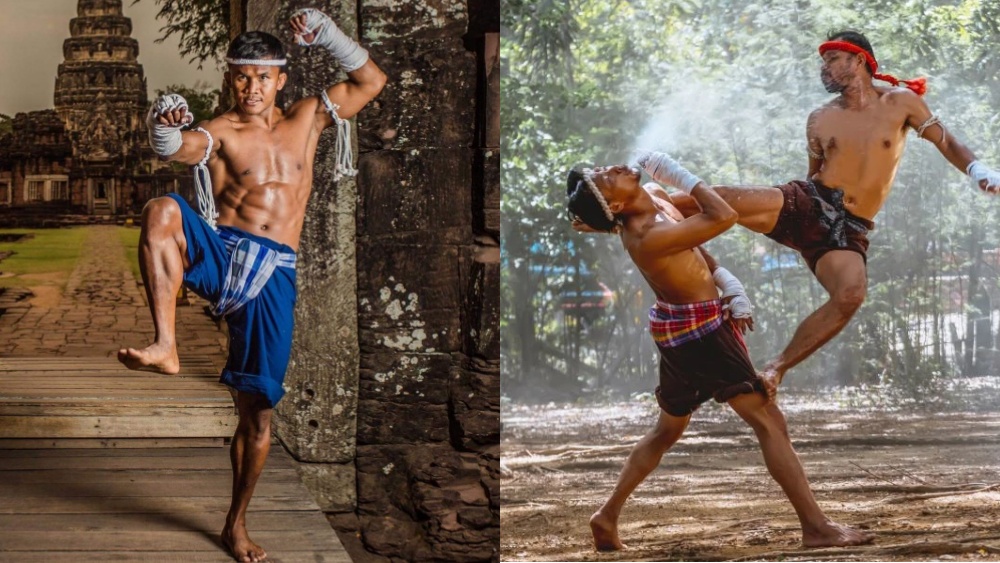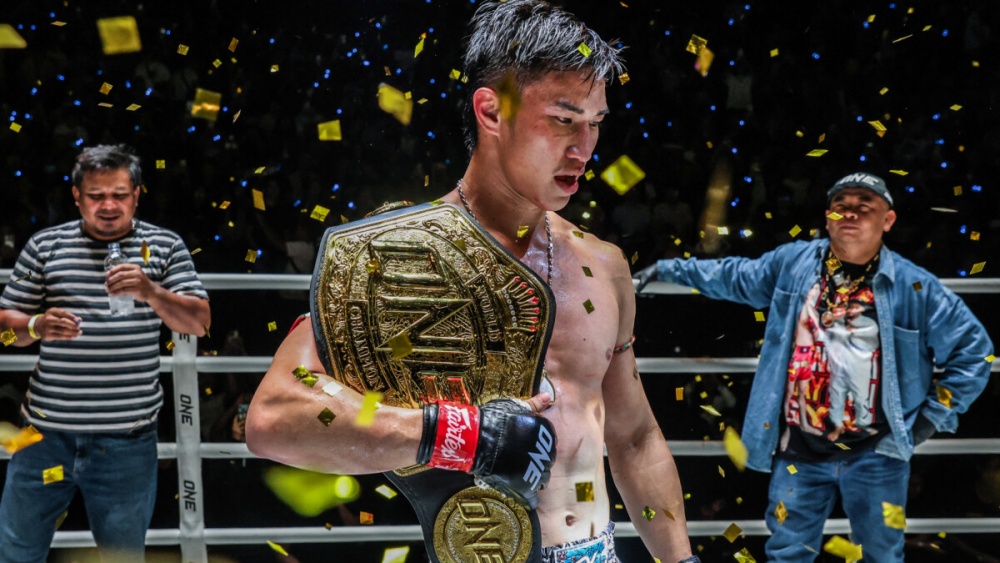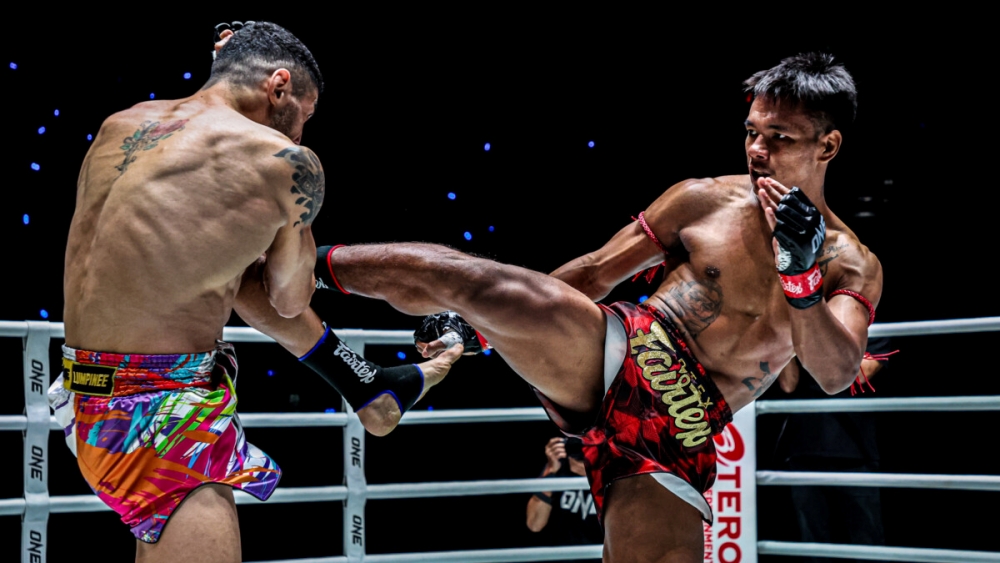Unlike boxing, that only involves the use of your hands, Muay Thai allows the use of your elbows, knees, and shins as weapons. Because of this, not only are the head and body a legitimate target but the arms and legs too. In fact, many fights end before the bell due to the incessant pressure delivered by a good kicker. Today, Evolve Daily looks at some of the essential kicks you should be practicing as a Muay Thai fighter.
1) Teep
Also referred to as the push kick, the teep is a long range stamping kick used to do damage and also keep your opponent at bay. This kick is also a brilliant range finder and can be used to set up other techniques in place of the traditional jab. To perform this kick in the most common way (off the front leg closest to the opponent), shift your weight so that more is carried on the back leg. You’ll notice your front leg then becomes lighter. Raise the knee upwards as if bringing it towards your chest then stamp forward, leaning backwards slightly and driving the hips towards the target at the same time. The point of impact can vary depending on the objective. The sole of the foot to maintain distance and the ball of the foot, or sometimes even the heel, for more damaging shots. Typically the target for this kick is the torso of the opponent, but many fighters also teep to the thighs for a fast and disruptive strike. Less commonly, something of an insult in Muay Thai and definitely not advisable to do to your training partners, you may even see a teep to the face now and again.
2) Low Kick
The low roundhouse kick is one of the most devastating kicks in any martial art due to the incredible amount of power that can be generated into it. You don’t have to look far to see a fight finished within the allotted rounds simply by a series of stunning leg kicks. Aimed at either the inner or outer thigh of the opponent, the low kick effectively sandwiches the meat of the thigh between the attacker’s shinbone and the defender’s femur. To throw any roundhouse kick, the starting motion is both a snapping of the hip and twisting of the lead foot on the tiptoe. The kicking leg is essentially a dead weight, carried round with the force of a baseball bat into the opponent’s leg. Unlike other martial arts, where kicking with the foot is typical, Muay Thai emphasizes the use of the shin. The foot is made up of many small bones, whereas the shin is one solid block swinging towards an opponent. Not only can the low kick be used as an impact weapon, but if used correctly, it can also sweep an opponent completely off their feet, scoring big in a Muay Thai fight.
3) Body Kick
Fired off in the same way as the low kick, the mid level roundhouse is another fight finisher. Probably the most interesting detail about this kick is the option to either attack the arms or torso of the opponent. Many fighters aim at the arms specifically over the course of a few rounds to break down the opponents guard. After taking repeated damage to the upper arms, it becomes extremely hard to maintain an effective defensive position with the hands held high. Later on in a fight, this allows for an easier attack to the head, and an opportunity for the coveted knockout strike. Repeatedly kicking the arm can also render their punches from that side useless.
The target that is usually the first choice option for someone throwing a body kick is the ribs. Landing a full power kick across the ribs is one of Muay Thai’s trademark moves. Repeated kicks against the heavy bag or on the pads, with an emphasis on speed and hip torque, is the fastest route to a fight ending roundhouse.
4) High Kick
A highlight reel finisher, the high roundhouse is one of the more spectacular shots to witness in a Muay Thai bout. This shot is almost invariably targeted to the head of the opponent. The head kick has the longest path from the floor to the target, so it is essential to set it up correctly by convincing your opponent to lower their guard in some way. Body shots, kicks, and knees all encourage a lower guard, and opportunity to land the head kick.
5) Switch kick
A variation on the roundhouse, a switch kick requires a switching of the stance. For example, if you are right handed it means your left leg will usually be in front. Once switched, your lead left leg becomes your power leg, ready to attack the right side of the opponents body. Switch kicks are used for a variety of attacks and are best used to mislead and “fake out” an opponent with clever timing, footwork, and speed. When you switch your stance, try not to jump both legs at once (remember leg kicks can knock you over mid jump!). Instead, try to take two quick steps. Step the lead leg back, then the back leg forward quickly to stay grounded and move with speed and proper balance.
6) Jumping Kick
Performed with either a jumping switch or simply straight off the ground, the jumping kick is uncommon but even more impressive than the standard roundhouse kick. By jumping as you kick, you add a great amount of momentum, making jumping kicks some of the strongest techniques you can use. Try jumping upwards as you throw your roundhouse kicks on the heavy bag so that it lands while you are still in the air. This kick is sometimes seen when a fighter catches his opponent’s leg, jumping forward into his opponent as he off balances him.
Kicks are an essential part of the Muay Thai game. They are harder to learn and harder to pull off well in a fight, but that’s why they score so highly. Many fights often look quite evenly matched to an outside observer, where one competitor is throwing heavy punches and the other heavy kicks. However, as is also often the case, when the decision is announced the fight goes the way of the kicker. This isn’t always the result of course, but diversifying your attack with these techniques is a must for any serious martial artist.
You may also like:

















